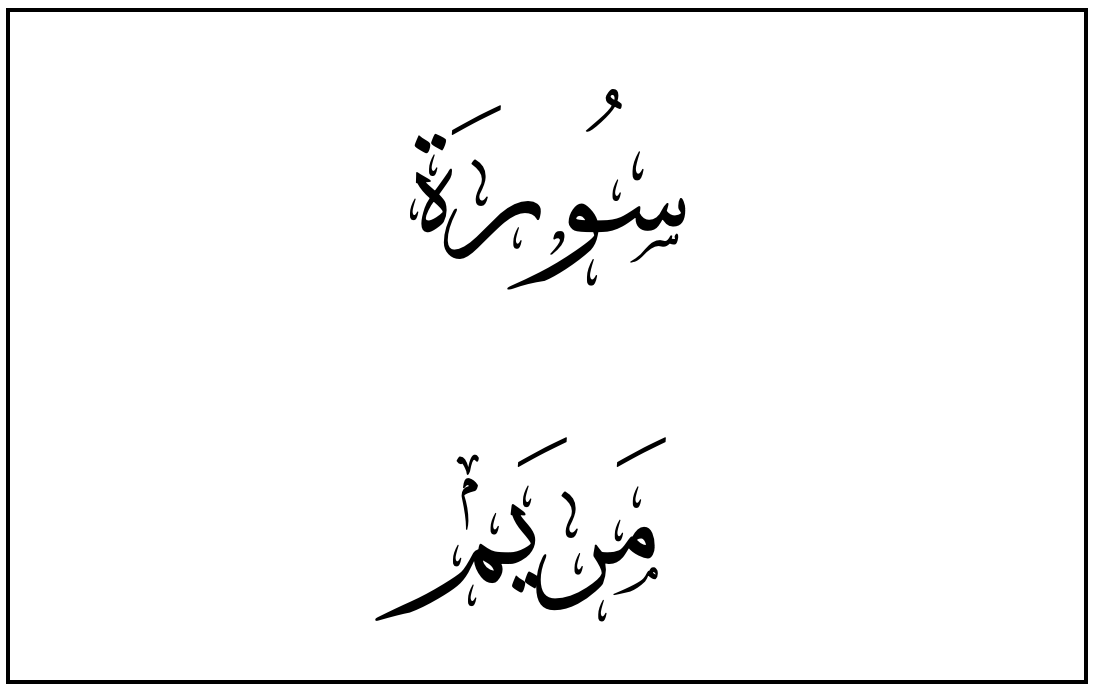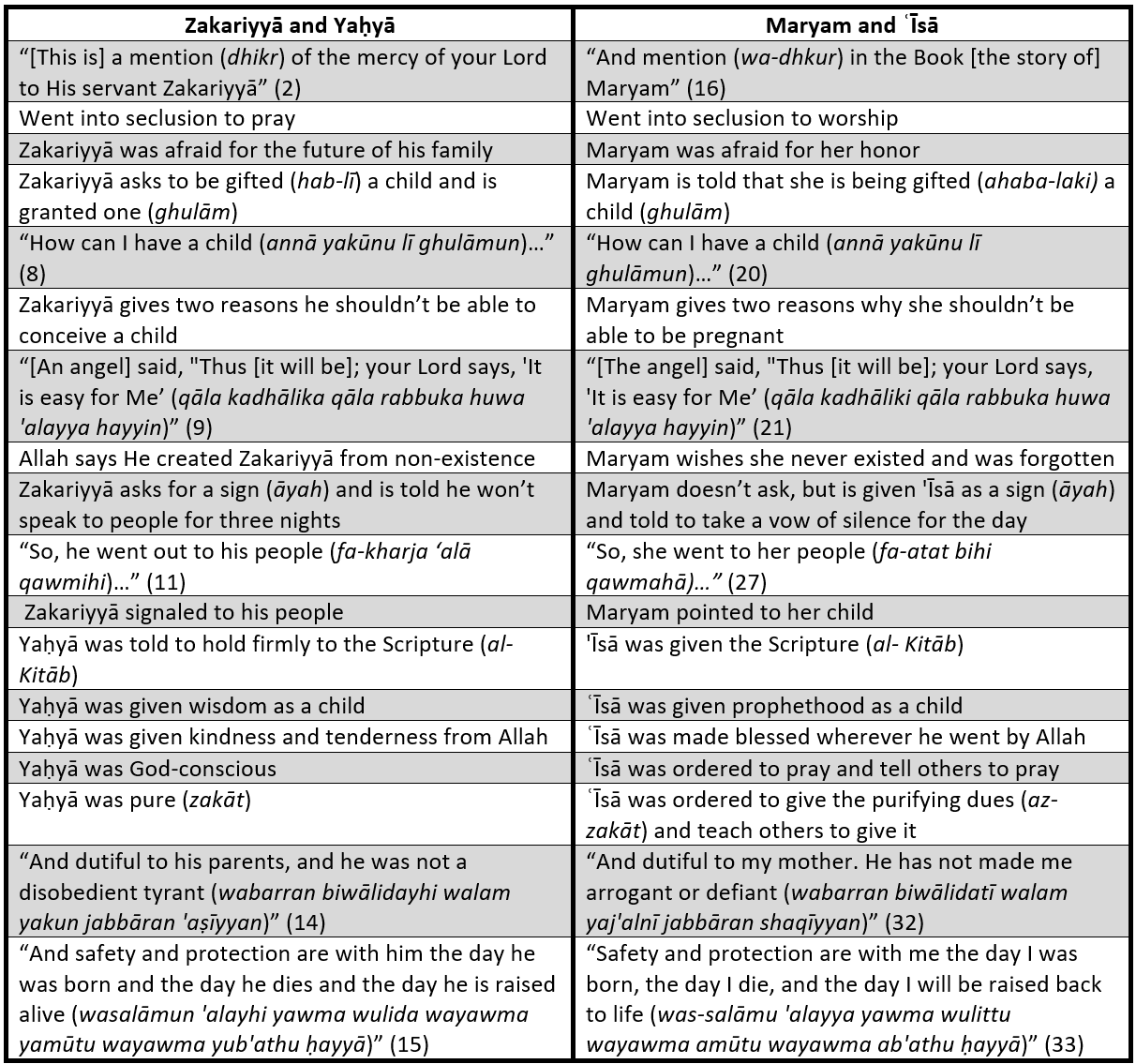Sūrat Maryam (Part 3)
Part 3 of observations on the organization, structure, and coherence of Sūrat Maryam
See last week’s post for Part 2.
Before moving to the final structure of Section [A], there are some notable parallels between the narratives of Zakariyyā & Yaḥyā and Maryam & ʿĪsā.1
Parallels Between Zakariyyā & Yaḥyā and Maryam & ʿĪsā
As we will see, there are many interesting parallels between the first two stories of this sūrah. The similarities, which occur in the same order, are summarized in the table below:
The parallels in this outline may inform us of a few points that were not readily apparent upon first reading. For example, notice that Yaḥyā being given wisdom as a child lines up with ʿĪsā being made a prophet. This may support the tafsīr opinion that the “wisdom” given to Yaḥyā was foreshadowing his eventual prophethood.
Or we can look at what did not align. For example, notice that the āyāt describing Maryam’s pains of labor and childbirth lack an equivalent in the story of Zakariyyā and Yaḥyā. This could be a subtle point being made for us to appreciate the magnitude of child bearing and delivery. In other words, there is nothing to compare it to.
On a broader level, it seems that Allah ﷻ juxtaposes these two stories so closely together to drive home the message coming up in the final structure of Section [A], that is, that Allah ﷻ never has, and never will, have a child. The miraculous birth of ʿĪsā is very similar to the divine intervention involved with the birth of Yaḥyā. Both were amazing prophets, but no more than that. It does not make sense to attribute divine properties to ʿĪsā when Yaḥyā has such a similar story.
Returning to Section [A]
The final part of Section [A] contains another parallel structure, but this one focuses on the consequences of blasphemy and attributing a son to Allah ﷻ.
CONNECTIONS
[A14/A14’] - The structure begins with a declarative statement about ʿĪsā as it is his account “about which they are in dispute.” The parallel āyah begins along the same vein mentioning that “the factions differed [concerning Jesus].”
[A15/A15’] - Allah ﷻ definitively declares Himself free of the attribution of a son, and to complement that statement, the corresponding āyāt allude to the state of those who do not desist from making such claims. They will clearly “hear and see” the truth when they stand before Allah ﷻ on the Day of Judgment. What is more, Allah ﷻ describes these people as being “in clear error (ḍalāl),” which is a callback to Sūrat al-Fātiḥah (The Opening) wherein many scholars say that the “astray (aḍ-ḍāllīn)” mentioned at the end of the sūrah is referring to the Christians; the group directly associated with claiming ʿĪsā as a son to Allah2 ﷻ.
[A16/A16’] – These two parts are connected through their shared usage of vocabulary. In the top āyah, Allah ﷻ begins it saying, “When He decrees an affair (idhā qaḍā amran)” which is similar to the parallel āyah in which He says, “when the matter will be decreed (idh quḍiya al-amr).” This creates a link between Allah’s ability to decree matters at will without the need for a son, and the fate of those who do not internalize this message.
[A17/A17’] - Finally, the structure ends with a comprehensive summary of what every prophet and messenger was sent to teach: Allah ﷻ is our Master, so worship Him and accept His guidance. Why? Because we will all be brought back to Him for accounting and judgment.
We will continue next week.
And Allah ﷻ knows best.
The following parallels are built on the work of Bilal Gökkir in Form and Structure of Sura Maryam: A Study From Unity of Sura Perspective
Ibn Jarīr aṭ-Ṭabarī, Tafsīr aṭ-Ṭabarī, 1:7





